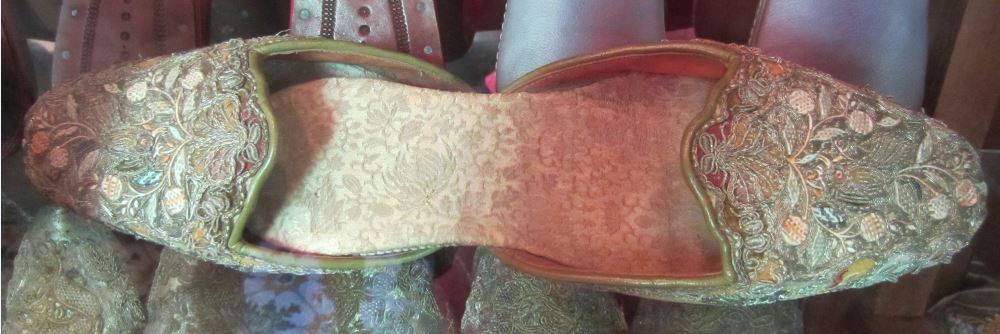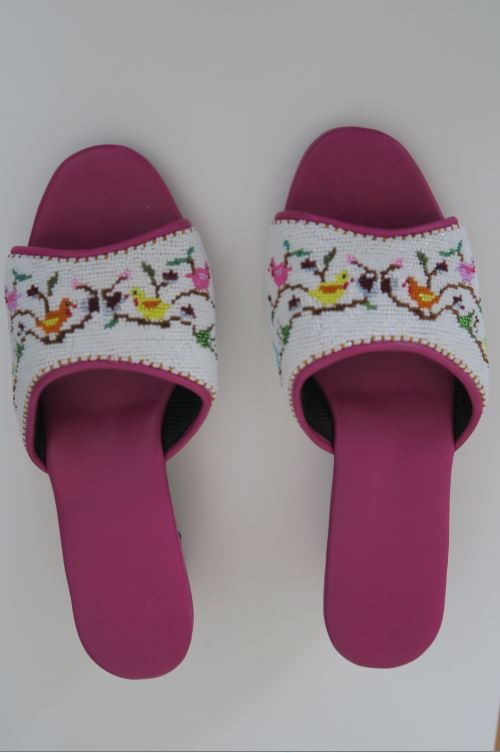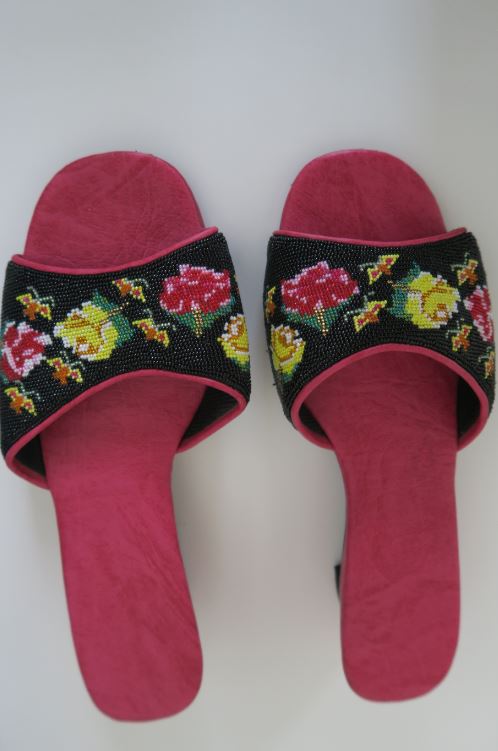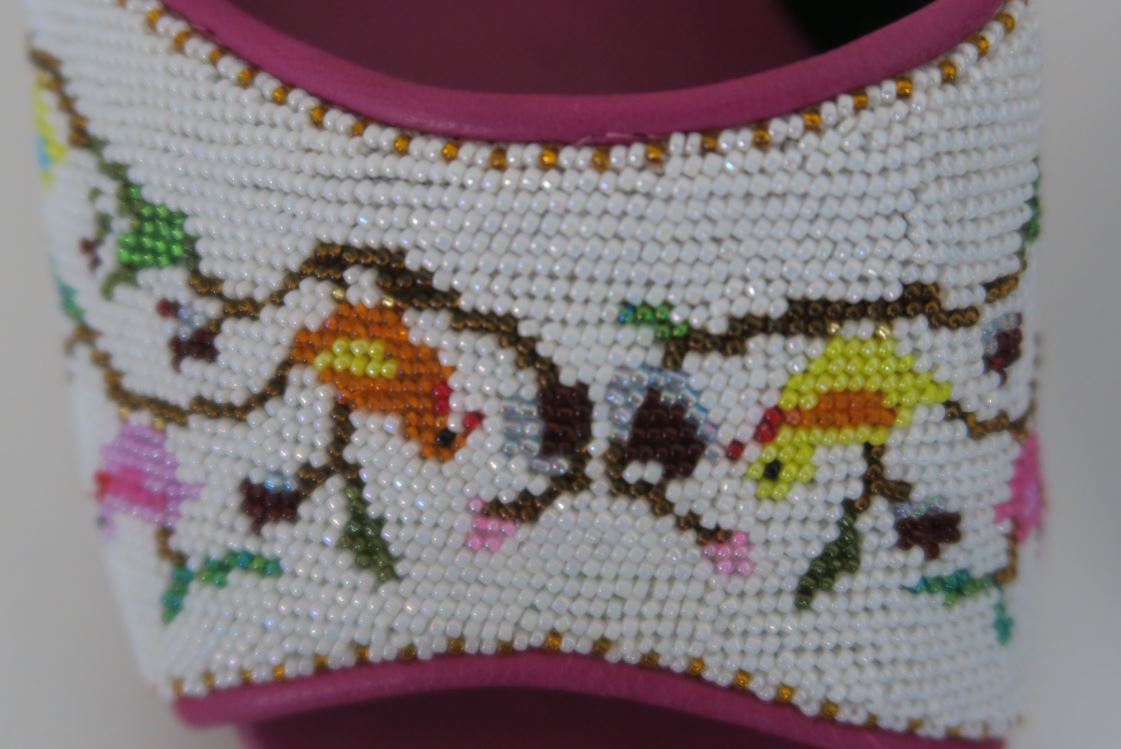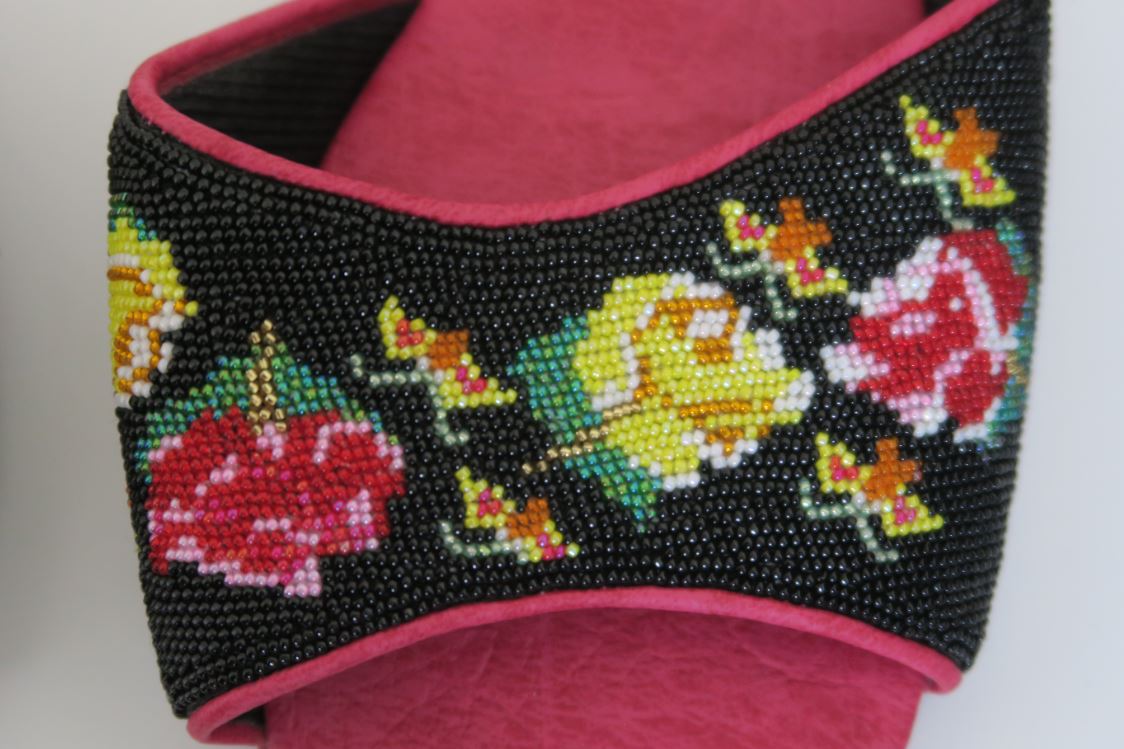On the day of a trip to the wet market in Penang, Chye Hoon made a reference to not wishing to wear her beaded shoes. If you were wondering what beaded shoes look like, here are two modern examples from
Colour Beads, a delightful shop in Malacca. (For a brief history of Malacca and to see where it lies on a map, click
here.) One glance at these delicate shoes is enough for you to understand why Chye Hoon did not want them soiled at a wet market.
If you were an old-style Nyonya, you would have been expected to thread beads together to make your own shoes. Beading was part of sewing, something you simply had to be good at (along with cooking and homemaking). Nyonya beads adorned many items, most often the toe-tops of sandals or slippers. These had open heels at the back to allow the feet to slip in easily. Here are shots of the above slippers close-up, so that you can appreciate how fine the beads are.
Nyonya beads were made of glass, metal and plastic, and threaded either individually or in groups by hand onto backing materials. Though I’ve never tried it, I imagine that beading is far from easy. A single slipper top takes days, if not weeks, to make. The beaded slippers from Colour Beads have to be specially ordered.
Beading was even more challenging in Chye Hoon’s time because tiny beads – micro-beads – were then in vogue. Being much smaller, micro-beads required greater patience and much dedication, not to mention skill. In its heyday beading was a valued craft. Beads found their way onto more than shoes: they covered purses, pouches, belts, handkerchiefs and even ceremonial vases. Like all else Nyonya, beading was and remains a time-consuming art. For shoes from Colour Beads, expect a delivery time of between two to three months.
